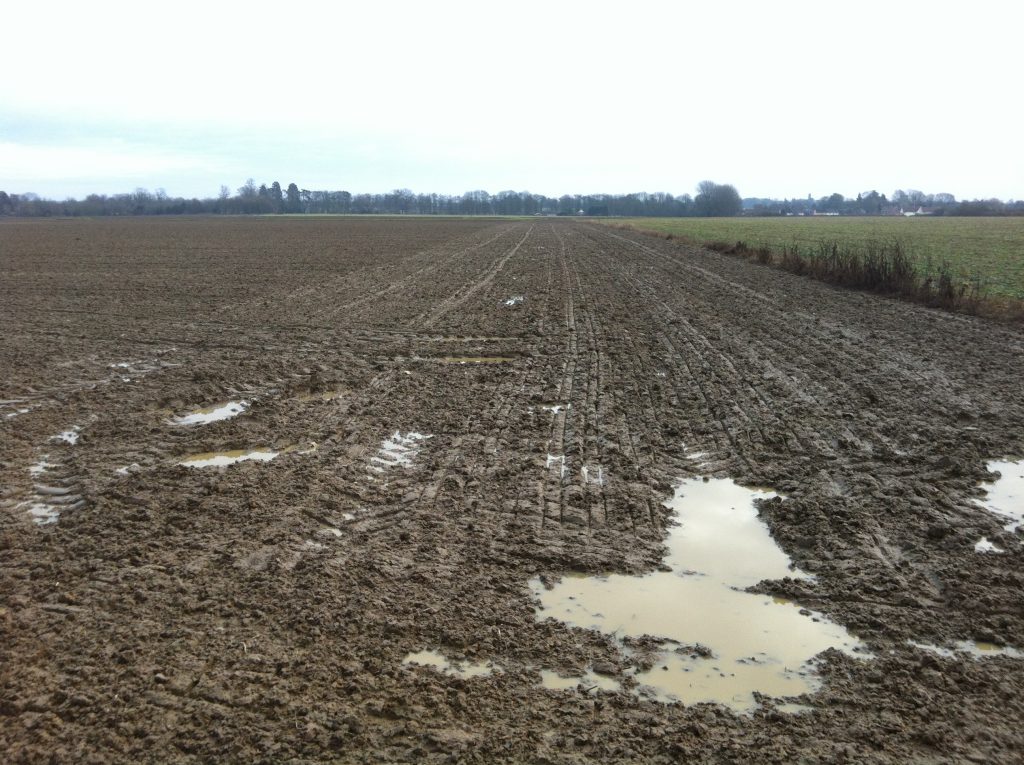Soil conditions central to weed control this autumn
17th October 2017
Black-grass thrives in wet, waterlogged and poor draining soils, which makes field drainage, compaction and soil conditions top of the list of “watch-outs” this autumn.
Black-grass thrives in wet, waterlogged and poor draining soils, which makes field drainage, compaction and soil conditions top of the list of “watch-outs” this autumn, according to cultivation specialist Philip Wright and BASF’s Ruth Stanley, who farms in Leicestershire.
The compaction associated with field traffic on wet soils increases the chance of poor field drainage and poor weed control. Tyre pressures should be front of mind to minimise the damage, Mr Wright suggests, because of the risks of structural damage following the erratic rainfall we’ve had over recent weeks.
He offers three simple pieces of advice for those facing the headaches of wet drilling. “Check your wheelings post-harvest to see if soil loosening is needed, avoid cultivating to the same depths as previous years and minimise surface disturbance ahead of stale seedbeds.
“If mole-draining is possible, avoid working them into low-lying parts of fields because they will become wetter and further encourage black-grass in these areas.”
Dual wheels and tyre pressures can help ameliorate further damage, if some simple rules are followed, he adds.
“If you’re using duals, reduce the axle total carrying capacity by 12% compared to using singles and make sure that all tyre pressures are identical for the inside and outside pairs.”
Mrs Stanley cites wet autumns as “very bad news for us as farmers,” but suggests that they do bring a couple of opportunities – the first is that failed field drains are easily spotted by lying water, the second is that pre-emergence herbicides work better in moist soils.
“I’d go as far as to say that, provided we don’t have too much more rain during October, conditions are perfect for flufenacet and pendimethalin-based herbicides, such as Crystal. Also, given that there is no known resistance to flufenacet, this chemistry is now an essential part of any black-grass programme.”
Pre-emergence spray programmes should be based on full rates of flufenacet, pendimethalin, and diflufenican as Crystal + Hurricane or Liberator + Stomp Aqua, she advises.
“These programmes will give you the broadest spectrum of control as well as providing three different, but complementary, modes of action for grass and broad-leaved weed control. Also, remember that using Avadex granules first helps to sensitise weeds to other pre-em chemistry because of its different mode of action.
“However, we need to get cultural controls right before we open chemical cans, and if you’re not sure whether, or what black-grass resistance you have, assume it is difficult and be relentless in controlling it.”
She notes that, given the right weather, you can achieve 97% control if employing the right cultural and chemical controls for your situation.
“However, you need to have a good understanding of where weed seeds sit within the soil profile and manage them accordingly, whether that’s stale seed beds, late drilling or competitive varieties at the right seed rates.
“It’s not always possible, but the aim should be to leave a seedbed with good tilth and a cobble free surface, to allow any chemicals used to deliver the best control possible.
“Pre-emergence herbicides should be applied within 48 hours of drilling and don’t take the chance of using inferior formulations of herbicides at this stage, you’ll never be able to turn the clock back; keep front of mind that just 10 plants/m2 can produce 100 heads or 10,000 seeds, so even at these levels of control, 300 seeds/m2 can be returned to the soil.”

